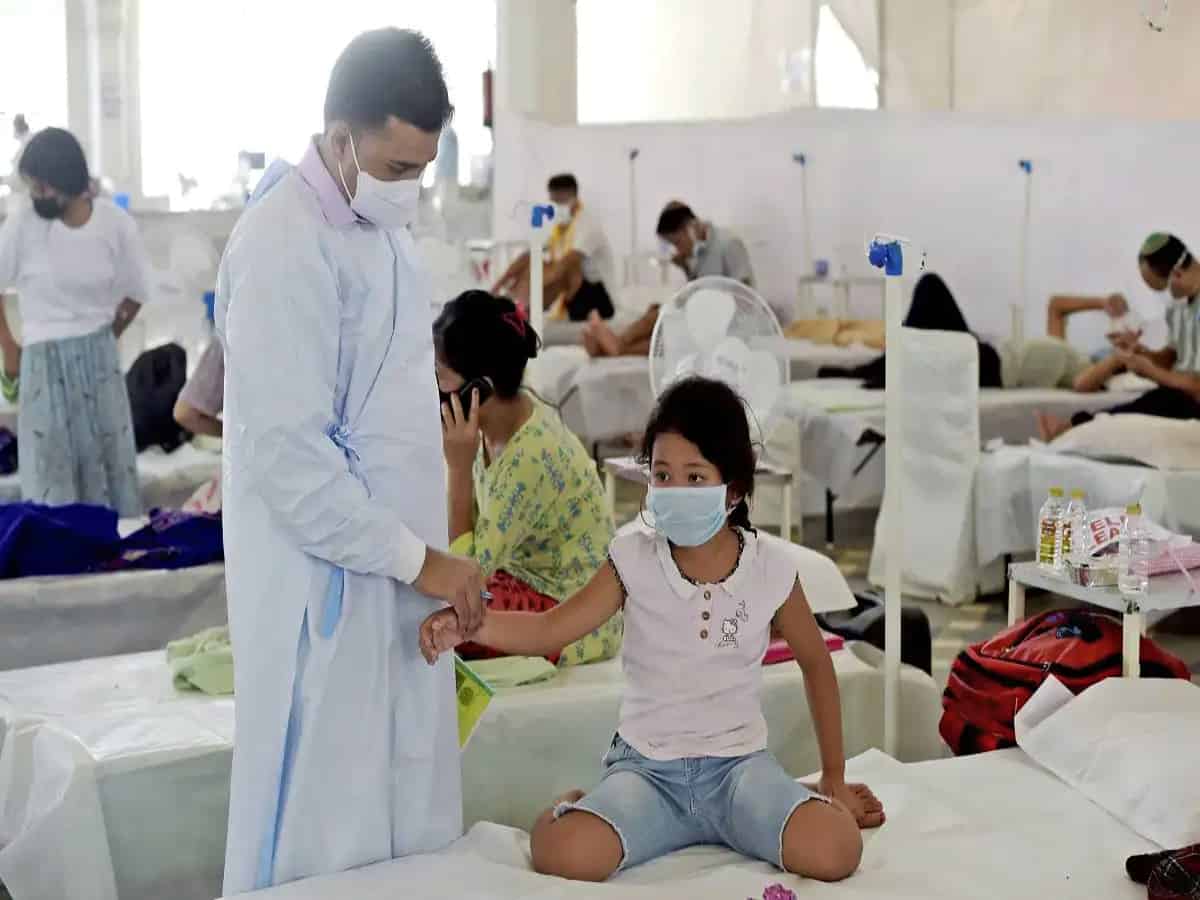Hyderabad: What started as a “mystery fever” in Uttar Pradesh has now spread to other states as well in the form of dengue and viral fever. Bihar, Jharkhand, Chhattisgarh, Madhya Pradesh, Haryana, Delhi, Andhra Pradesh, Rajasthan, Himachal Pradesh, Karnataka, West Bengal and Telangana have been reporting suspected cases of dengue and viral fever.
Uttar Pradesh
According to the official records Ferozabad district of Uttar Pradesh; the epicentre of viral fever has recorded more than 60 deaths.
Additional Director of Health Dr AK Singh said several teams are working to control the outbreak of viral fever and dengue. A medical team led by communicable disease specialist Dr GS Bajpai had gone to Tundla (a town in Ferozabad) on Thursday and visited affected areas in Firozabad city and Shikohabad on Friday, he said.
Bihar
Bihar is among the few states in the country which continues to report cases of prolonged viral fever. As per government data, around 7000 children visited different government healthcare facilities in the state with complaints of high fever and other flu-related symptoms. 15 children lost their lives to this viral disease.
Chhattisgarh
80 children of Koriya district of Chhattisgarh are hospitalised with high fever, cough and cold. The state government health officials have said that the deaths are due to the amalgamation of high fever and congenital diseases.
Telangana
Doctors in Hyderabad city are also grappling with the situation of unexplained fevers. Doctors said that all possible tests run on patients complaining of moderate to high fever turns out to be normal.
Unexplained fevers are been reported at the Apollo Cradle and Children’s Hospital and almost 30% of the current prolonged viral fever cases are landing up at the Niloufer Hospital.
What’s even more worrying is that the children form a significant part of the infected patients.
What is this mysterious viral fever?
Medical experts are suspecting it to be a vector-borne ‘scrub typhus’ bacterial disease.
Scrub typhus is a rickettsial infection that was previously documented in India and other South Asian nations. It is a vector-borne disease and affects the central nervous system, cardiovascular system, renal, respiratory, and gastrointestinal systems. Most cases of scrub typhus occur in rural areas of Southeast Asia, Indonesia, China, Japan, India, and northern Australia. Anyone living in or travelling to areas where scrub typhus is found could get infected.
How does it spread?
According to the Centers for Disease Control and Prevention (CDC), Scrub typhus is spread to people through bites of infected chiggers (larval mites). During its development cycle, the mite only feeds on the serum of warm-blooded animals. Resulting bite marks are common on the groin, armpits, genitalia, and neck.
What are the signs and symptoms of scrub typhus?
Symptoms of scrub typhus usually begin within 10 days of being bitten. Signs and symptoms include fever and chills, headache, body aches and muscle pain. As the sickness progresses a dark, scab-like region at the site of the chigger bite (also known as eschar), mental changes, ranging from confusion to coma.
People with severe illness may develop organ failure and bleed which can be fatal if left untreated, according to CDC.

